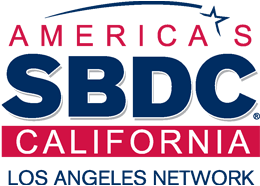Are you properly tracking and managing your small business’s expenses (the costs associated with operating your business)? Recording and regularly reviewing your business expenses helps you pinpoint unnecessary expenditures, cut costs and be better prepared come tax time.
To improve the way you track and manage your business expenses, try these 10 tips.
-
Get automated. Accounting software such as Quickbooks greatly simplifies tracking and managing expenses. Be sure to choose the same program your accountant uses or one that is compatible; this makes it easy for you or your accountant to import information directly to your tax return at tax time. Microsoft Office also offers spreadsheet templates you can use to track business expenses.
-
Prepare for tax time. Be especially sure to accurately record expenses you plan to deduct on your business taxes, such as travel and entertainment, business use of vehicles, office equipment and supplies, association fees and charitable contributions. Visit the IRS website for details on deductible business expenses.
-
Never mingle business and personal funds. Avoid using personal cash, checking accounts or credit cards for business expenses. Even if you reimburse yourself or employees for these expenditures, commingling funds adds unnecessary complexity and can expose your business to IRS scrutiny.
-
Watch your cash. Petty cash expenditures can create problems if not adequately tracked. Limit the use of petty cash to times when it’s absolutely necessary. Create a cash account in your financial software to track cash expenditures.
-
Save receipts. You’ll need receipts to document tax-deductible expenses in case you’re ever audited. Jot down the purpose of the expense on each receipt. Save storage space and hassles by using a scanner or your smartphone to create PDFs or photos of receipts and file them digitally.
-
Be timely. Record expenses as soon as possible after they occur so you don’t end up with piles of receipts. Regularly documenting data saves you time in the long run and ensures your financial records are always up to date.
-
Give yourself credit. Using business credit cards streamlines expense recording, since business credit card statements typically break down your monthly, quarterly and annual spending into categories. And with most retailers now accepting credit cards for amounts as small as $5, there’s little need to carry cash.
-
Harness technology. There are mobile apps (applications) and cloud-based solutions that enable you to track expenses wherever you are and categorize them to the appropriate project or client. Look for products that integrate easily with your existing accounting software.
-
Monitor results. Using your accounting software, create weekly and monthly reports to examine your expenses and revenues. Develop a monthly, quarterly and annual budget based on past expenditures. Regularly monitor your expenses to see if they’re in line with your budget.
-
Trim the fat. Are your expenses escalating beyond your budget, or do you need to improve your profit margins? Look at each expense to figure out where you can cut back, starting with those that don’t directly contribute to the bottom line.
Rieva Lesonsky is founder and President of GrowBiz Media, a media and custom content company focusing on small business and entrepreneurship. Before launching her business, she was Editorial Director of Entrepreneur Magazine. Follow Rieva at Twitter.com/Rieva and visit her website SmallBizDaily.com to get the scoop on business trends and sign up for free TrendCast reports.
sponsored by vsolvit ![]()



